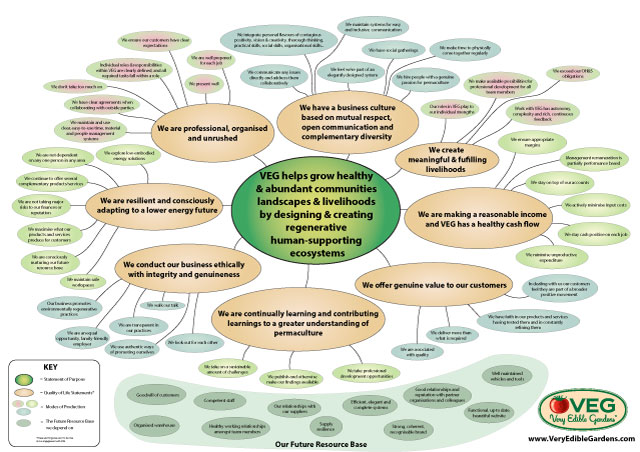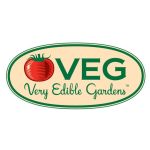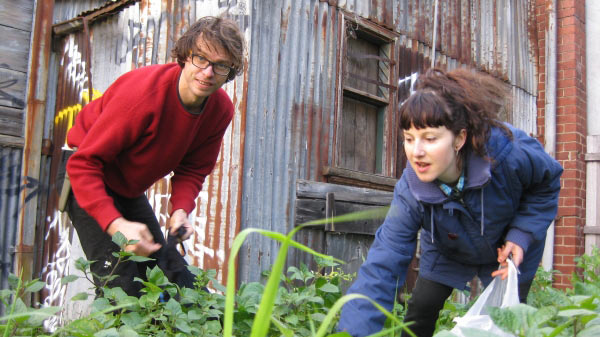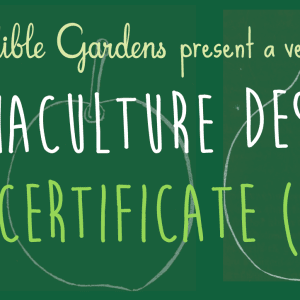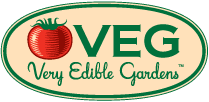NOTE: Dan has HUGELY evolved and updated this content since it was first written in 2014 – check out on his new site www.HolisticDecisionMaking.org
In Part One of this series we introduced Holistic Management as a decision making process in use by VEG and the first step in applying it – defining the whole under management. Now, we move on to consider…
Articulating an Holistic Context
This is where the real work begins. What Savory in the past called the Holistic Goal (or HolisticGoal) and nowadays calls the Holistic Context is the heart of managing holistically. An holistic context has four aspects. Let us tackle each in turn. Note that in the below quotations, which are all from the second edition of Savory’s Holistic Management, I have substituted holistic goal with holistic context to reflect his current usage (which Savory introduced and explained in this PDF).
1. Statement of Purpose
For any whole that was formed for a specific purpose, a statement of purpose is the starting point of your holistic context. Your statement of purpose should succinctly capture what the whole was formed to do and thus why it exists.
Here is VEG’s statement of purpose or our why:
VEG exists to help grow healthy and abundant communities, landscapes, and livelihoods by designing and creating regenerative, human-supporting ecosystems
Make your statement of purpose as simple and short as it can be to capture the essence of why your whole exists, but no simpler or shorter (to paraphrase a famous scientist). A statement of purpose might be one, two, or perhaps at most three sentences long. Reading it should resonate with you and remind you why you bother getting out of bed to participate in this whole. Keep in mind also that though you might later choose to share your statement of purpose with the world (as I have just done for VEG), at this stage it is for the decision makers, not anyone else. In VEG’s case we are aware, ironically, that as things stand we can better deliver on our statement of purpose by not actively sharing it with the general public, but by instead using much simpler messages (that of course remain true to it).
One reflection of my experience of working with others to articulate a statement of purpose is that it has proved much more effective to have the various decision makers independently pen one and only then to share them and work together to combine them into a single statement. Much faster, and much more inclusive of everyone’s perspectives and desires than trying to form one from scratch together.
Finally, note that some wholes don’t require a statement of purpose – wholes such as an individual person, a couple, or a family, which where not formed to do anything in particular, but to do all sorts of wonderful things. That said, myself and many people I know have personal statements of purpose that they find really helpful, so by all means don’t hold back if you or your family feel the urge.
2. Quality of Life Statements
Quality of life statements are the things the decision makers want to be true of the whole they manage. In Allan Savory’s words, “The quality of life portion of your holistic context expresses the reasons you’re doing what you’re doing, what you are about, and what you want to become. It is a reflection of what motivates you. It should excite you. It speaks of needs you want to satisfy now, but also of the mission you seek to accomplish in the long run. It is your collective sense of what is important and why” (Holistic Management, p. 71). Furthermore, “humans will always bias any decisions they make—even in rigorously controlled experiments—in favour of what they really want. So what you really want must be in your holistic context” (p. 272). Here are a few areas Allan suggests considering in your quality of life statements:
- Relationships
- Challenge and growth
- Purpose and contribution
- Economic-wellbeing
And here Bruce Ward introduces quality of life statements:
Here are VEG’s quality of life statements:
- We are professional, organised and unrushed
- We have a business culture based on mutual respect, open communication and complementary diversity
- We create meaningful & fulfilling livelihoods
- We are making a reasonable income and VEG has a healthy cash flow
- We offer genuine value to our customers
- We are continually learning and contributing learnings to a greater understanding of permaculture
- We conduct our business ethically with integrity and genuineness We are resilient and consciously adapting to a lower energy future
We have spent a lot of time reflecting on and evolving these, and though we know they will keep evolving, we feel that if they are continue to be increasingly true of the way VEG manifests its statement of purpose in the world, our quality of life as individuals will continue to be enhanced by our involvement.
Here’s a lovely mock quality of life statement for by a middle-aged couple Allan Savory uses as an example in his book, where their life together is the whole under management:
“To be engaged in meaningful work for the rest of our lives and to be excited and enthusiastic about what we have to do and get to do each day. To be secure financially, physically, and emotionally into old age; to be known for our honor, integrity, chivalry, and spirit. To maintain robust health and physical stamina; to enjoy an abundance of mutually satisfying relationships. To explore and experience wild places and to ensure those places will still be there when our grandchildren’s grandchildren seek to find them. To live simply and consume sparingly” (Holistic Management, p. 83)
A few points of difference I’ll mention here are firstly that we find it worthwhile to word your quality of life statements in present tense. Not to be, or we hope, or we want, or we aim but we are such and such. Not “I want to be healthy and vibrant” but “I am healthy and vibrant.” Write them as if they are happening now, and you’ll find them all the more powerful in taking you where you want to go. Closely related to this is making your quality of life statements as active as possible. Recently I suggested someone consider rephrasing something like “I maintain relationships with my clients that are respectful and have integrity” to “I relate to my clients with respect and integrity.” Avoid nouns (“relationship”) when you can instead use the verbs (“relate”) they summarise – which are almost always more grounded, direct and to-the-point.
Second, while the literature on Holistic Management I’ve seen tends to amalgamate such statements or values into a single quality of life statement, with VEG and elsewhere we have evolved towards multiple distinct (yet inevitably overlapping in meaning) quality of life statements. I might be missing something here, but as far as I know it doesn’t matter which way you play it, and you’ll see later why I’ve personally found this so worthwhile (in creating a holistic context diagram).
Get it Down, then Get it Good
One of the things people find hardest about articulating quality of life statements is getting something down to then start morphing toward coherence and completeness. In our culture we tend to cogitate over the perfect sentence before we reach for our pen. But as Savory says, “In recording everyone’s thoughts initially, it is important that you capture them in simple phrases, rather than well-worded sentences. You will have plenty of time to edit the results into a unified statement” (Holistic Management, p. 74). Just get words and phrases flowing, get them out and get them down. There will be plenty of time to get them good later.
Savory also observes that “creating a quality of life statement requires a good deal of reflection and numerous conversations, and it may be several months—a year or more in large organisations—before it begins to express what you want it to express. In the interest of moving on, however, start with a very rough statement that indicates the general direction in which you want to head. Then you can form the remaining two parts of your holistic context and begin making decisions that lead you toward it” (Holistic Management, p. 74)
In terms of addressing this issue, let me share a really simple technique I’ve found useful in helping groups make a start on their quality of life statements. Sometimes before the session I use some prompting questions like this to get the juices flowing.
- What do you want to be true of your involvement with ____? What do you want from it, and what do you want to offer it?
- Describe ____ in 10 years from now. What’s going on and what does it look and feel like?
- What, if anything, do you feel could hold ____ back from reaching its full potential?
When we get together these are shared, and we then get out a whiteboard and I have folk start calling out words or phrases that capture aspects of what they want to be true of the whole under management. We just get these flowing until we start running out of whiteboard, and we then together start to tease out some themes and categories in what is now on the board.
Then, often in a subsequent session, we transfer the contents of the first whiteboard to a second whiteboard, grouping, editing, and refining as we go. No matter what the starting point, we always end up with something at least a little more patterned and organised than what we started with. When we are done we go back and ensure that not a single word or phrase that captures something essential for any decision maker has not made it across to the second whiteboard. When we are done, we erase the first whiteboard.
Next, as we repeat this transfer back to the original whiteboard (ideally with one session per transfer), the decision makers start threading the phrases and words in the main categories that have emerged into draft quality of life statements, usually starting with “we.” In this way, little by little, and without any particular difficulty at any point, we end up with a first draft set of quality of life statements that is coherent and that includes all the original ideas, and that have evolved in the context of rich discussion. Enjoy this process and keep in mind that, as Bruce Ward points out in the below clip, that the discussion amongst decision makers in forming the holistic context is as important as the actual words in it:
Okay, let us move on to the next step – forms of production.
3. Forms of Production
Just a few more steps, and then it will all start coming together, you’ll see. Just hang in there, it is so worth it. Forms of Production are defined by Savory as what you need to produce in order to create the quality of life that has been described. In focusing on what rather than how, Savory explains “you only want to list what has to be produced, not how it will be produced. How something is to be produced is a decision that needs testing” (Holistic Management, p. 77).
So, continuing with his example from above, he gives as forms of production for the middle-aged couple (pp. 83-84):
- Profit from meaningful work.
- Work or leisure time in wild places.
- Time for learning, meaningful discussion, companionship, and exercise.
- A warm and hospitable home environment—wherever home happens to be at any time—in which friends, family, and colleagues always feel welcome
Interestingly, in my experience I have repeatedly found it more intuitive and useful to think of the forms of production in terms of how you need to behave or even what you need to be doing in order to create the quality of life that has been described rather than what you have to produce. I understand Savory’s caution here, but while I have found it possible to easily reword all forms of production stated as things needing to be produced (e.g., to say something like we regularly enjoy work and leisure time in wild places as opposed to We produce work or leisure time in wild places, which to me is awkward and less direct), I often find there are crucial things that have to be happen in order to make a quality of life statement true that are either difficult or seemingly impossible to word in terms of what has to be produced. You will see several examples in VEG’s forms of production, some of which are shared below.
Accordingly, I have been using and recommending statements similar in structure to the quality of life statements (present tense, active voice) for the forms of production, and have found that so long as you are aware of the issue, you can safely avoid including details that are things you will use your holistic context to make decisions about (and which might or might not be a good idea at any particular time in the future), rather than things you include in your holistic context (which as far as you can tell you always want to be true, now and at all times in the future, even though the particular wordings will evolve as you go along).
Offering me a wonderful illustration of this difference, recently I had a workshop participant read out some draft forms of production for his own life as a whole under management. They included statements like “I drink one coffee per day” or “I watch TV versus read and draw at a ratio of no more than 1 to 2.” I passed on Savory’s advice: “Don’t quantify the forms of production in any way. How much of anything you have to produce is a decision that should be tested. Nothing requiring testing should be in the holistic goal” (Holistic Management, p. 90).
Moving on, though a single form of production can in principle serve multiple quality of life statements, in practice we have found that they usually attach themselves to just one. As an example, here are the forms of production underlying VEG’s quality of life statement we are professional, organised and unrushed:
- We present well
- We are well prepared for each job
- We ensure our customers have clear expectations
- We ensure individual roles and responsibilities within VEG are clearly defined and all required tasks fall within a role
- We don’t take too much on
- We have clear agreements when collaborating with outside parties
- We maintain and use clear, easy-to-use time, material and people management systems
The idea here is that if each of these things is happening, then, as far as we can tell, we will be professional, organised and unrushed.
I don’t know about you, but for me, the articulation of what you actually have to be doing (or producing in Savory’s framing) to realise the quality of life you want is a point when the transformative power of this framework starts coming into its own. The above components of the holistic context (statement of purpose and quality of life) have the ring of pithy aspirational statements that many of us have dabbled in somewhere along the line. But now we are directly specifying what must be true of your day-to-day reality in order to deliver on your statement of purpose in a way that achieves all of your desired quality of life outcomes. We are directly translating pithy aspirational sentiments into the fabric of everyday life. The rubber, my friends, is hitting the road! A recent workshop participant, Chris, sent through this quote from Thoreau after a discussion about this point, and I think it is perfect: “If you have built castles in the air, your work need not be lost; that is where they should be. Now put the foundations under them.” Forms of production are foundations (as is the future resource base we’ll move onto next).
I’ll share more of VEG’s forms of production shortly, but let me first share one example from my family’s holistic context just so you can see how the same principle applies. One of my family’s quality of life statements is We are physically and emotionally healthy and strong. Sounds great right? Who wouldn’t want this? But the clincher is what do we have to be doing to make this true (or at least to maximise the chances of it being true, notwithstanding the inevitable curveballs of life)? Our supporting forms of production are:
- We breathe clean air
- We drink pure living water
- We eat nutrient dense food
- We sleep well
- We live and work in toxin-free buildings which are light, warm and dry
- We lead active lives
- We are connected with health practitioners who help when necessary
Again, the idea is that if all these forms of production are true, the chances are that the quality of life statement they support is true.
I have noticed that the examples I’ve seen in the holistic management literature don’t tend to go to this level of specifying different forms of production for each quality of life statement. In Savory’s example of forms of production (see above), the forms of production are listed separately from the quality of life statements, without any direct connection between particular forms of production and particular quality of life statements.
So once again keep in mind that the way I am presenting holistic management is, as informed by my experience of applying it, a bit different to what the books say. I trust anyone using this article as a guide will in turn find their own direct experience informing the nuances of applying the framework in a way that best suits them. Indeed, in Holistic Management Savory encourages such experimentation and evolution: “The simple but successful framework for management and decision making outlined in this book will surely be improved and extended by thousands of people. As long as it remains simple enough for ordinary people to use, the power of the ideas behind it will encounter few limits” (p. 560).
Anyways, more on the power of holistic management later. For now, let us now move on to the final thread in the fabric of a holistic context – the future resource base.
4. Future Resource Base
“In describing your future resource base you need to consider how it must be many years from now if it is to sustain what you have to produce to create the quality of life you want” (Allan Savory, Holistic Management, p. 78). For the middle-aged couple in his book we have been going through, Savory gives the future resource base as:
People. We are known to be compassionate and thoughtful, well-informed, good listeners, fun to be with, adventurous, and supportive.
Land. The land surrounding and supporting our town will be stable and productive. Wildlife will be plentiful—we’ll be able to see animals, or signs of them, anytime we venture out. The river will run clear and be full of life, and eagles will nest in the trees alongside it once again.
As integral to a holistic context as the future resource base is, there are a couple aspects of the way Savory frames them that I have been finding useful to frame slightly differently in my own applications of Holistic Management. The first is including a description of the personal characteristics of the decision makers – “we are honest & compassionate,” or whatever the case may be. The idea is that you can’t have any direct control over the perceptions and attitudes of the people you depend on, so you instead specify what you can more directly influence – how you yourself behave. This in turn, the logic goes, will secure the support from others (outside your whole) that you depend on into the future. If we behave honestly and compassionately, others will think of us as honest and compassionately.
As true as this might be, however, I have evolved toward absorbing all these considerations into the quality of life and forms of production and making the future resource base a lot simpler and easier to assess as to whether it is getting better or worse. For instance (borrowing from Savory’s example above) the couple might have a quality of life statement that “we are known for our honour, integrity, chivalry, and spirit.” Then in the forms of production include statements like “we listen well in dealing with others,” “we support our friends readily,” and so on. They could list the things they would have to do in order to make it true that “we are known for our honour, integrity, chivalry, and spirit.”
Then, in the future resource base, as a sort of check that these forms of production are creating the desired quality of life, they would simply note things like “respect & support of our community,” as quite literally a resource that they depend on and wish to nurture (via their forms of production) into the future in order to achieve the quality of life (and, if appropriate, deliver on the statement of purpose) they have articulated.
The second aspect of framing the future resource base that I’ve been framing differently in practice is in the descriptions of the land and community etc as you envisage them being, “100, 500 or 1000 years from now (Holistic Management, p. 78).” So, in his example above, the land is described as it will hopefully be in the future, with eagles nesting alongside the clear, life-filled river and so on. I think it is important and empowering to make these kinds of statements, but in applying a holistic context find it more intuitive to comprise the future resource base of aspects of your resource base you know need to improve and keep improving, in order that you eventually arrive at the reality described in such visionings. So I would be inclined to put down “river clarity and life,” “wildlife habitat,” “water cycle function” and and so on, as part of my future resource base, and something I can easily check in on as to whether they are improving or deteriorating over time.
I do think articulating these sorts of visions is a critical step in then populating your holistic context, but I’m not sure about actually including them in your holistic context as future resource base descriptions. Rather, I have been finding it more intuitive to define the future resource base as simply what your forms of production depend on now and into the future. In other words, what are the resources (most likely included in your resource base back when you were defining the whole under management) you rely on in order to be able to do the things you need to do in order to make your quality of life statements true? Further, how do these resources have to be into the future if we are to maintain the quality of life we have articulated?
Here is what we currently have down for VEG’s future resource base:
- Goodwill of customers
- Staff competence
- Organised warehouse
- Healthy working relationships amongst team members
- Our relationships with our suppliers
- Supply resilience
- Efficient, elegant and complete systems
- Strong, coherent, recognisable brand
- Functional, up to date, beautiful website
- Well maintained vehicles and tools
- Good relationships and reputation with partner organisations and colleagues
We know that if any of these resources is getting worse over time, we are in trouble, for part of the very foundation of our ongoing existence is being undermined. Our ability to keep existing, and to keep delivering on our statement of purpose by doing the things we have to do to ensure the quality of life we want, depends on these resources being maintained, and, ideally, getting better over time.
Whichever way you choose to articulate it, the future resource base part of the holistic context is integral. The other aspects of the holistic context are focused on the present and at best the short term future: what do we want to be true of our whole now, and what do we have to be doing now to make it so? The future resource base requires that we shift our attention from the now into the medium and long-term future, and the indicators that will let us know whether we are on track.
Now, if you have articulated your statement of purpose, quality of life statements, forms of production, and future resource base, you have yourself a draft or temporary holistic context. It has probably taken you a while to get to this point, and you are likely itching to put it to the ultimate test – as an aide in actually getting on and managing your whole. Okay then, if you can humour a quick video recap and then a look at how you can capture your holistic context in a diagram, we will get on to applying it, where your holistic context starts to really earn its keep.
Quick Video Recap of the Above
Communicating your Holistic Context Diagrammatically
The examples of holistic contexts available in the literature tend to be statements, lists, paragraphs or tables. We started out this way, but over time we found them frustrating, in that they implicitly prioritise what happens to be at the top, and also are harder to take in at a glance, and to see how the different components relate to each other. So we developed the following diagrammatic way of portraying a holistic context, with the statement of purpose in the middle, surrounded by the quality of life statements, in turn surrounded by the forms of production, then with the future resource base as a cup or cradle underneath that supports the whole shebang. You can click on the image to see a larger version. I’ll explain below how sharing our holistic context in this format has led to several new ways of using it that have been really useful for us. One consequence that is just starting to come on line is that as other groups adopt this way of portraying their holistic context, we now have a sort of reference library of holistic contexts, and a communal understanding of the format such that in a very short time we can appreciate the essence of each other’s whole under management. I imagine events in the future where, I don’t know, people wander around with their holistic context diagrams printed on their shirts or something, and very quickly find and deeply connect with compatible and complementary wholes. Kind of like holistic management speed dating I guess…
Part Three – Getting Back in the Game
In the third and final part of this series, we look at how VEG has put and does put its holistic context to work, and how you can put your holistic context to work, which is the whole point of all this! Let’s go!
NOTE: Dan has HUGELY evolved and updated this content since it was first written in 2014 – check out on his new site www.HolisticDecisionMaking.org
Note: Holistic Management(R) is a registered trademark of Holistic Management International and is used by permission
